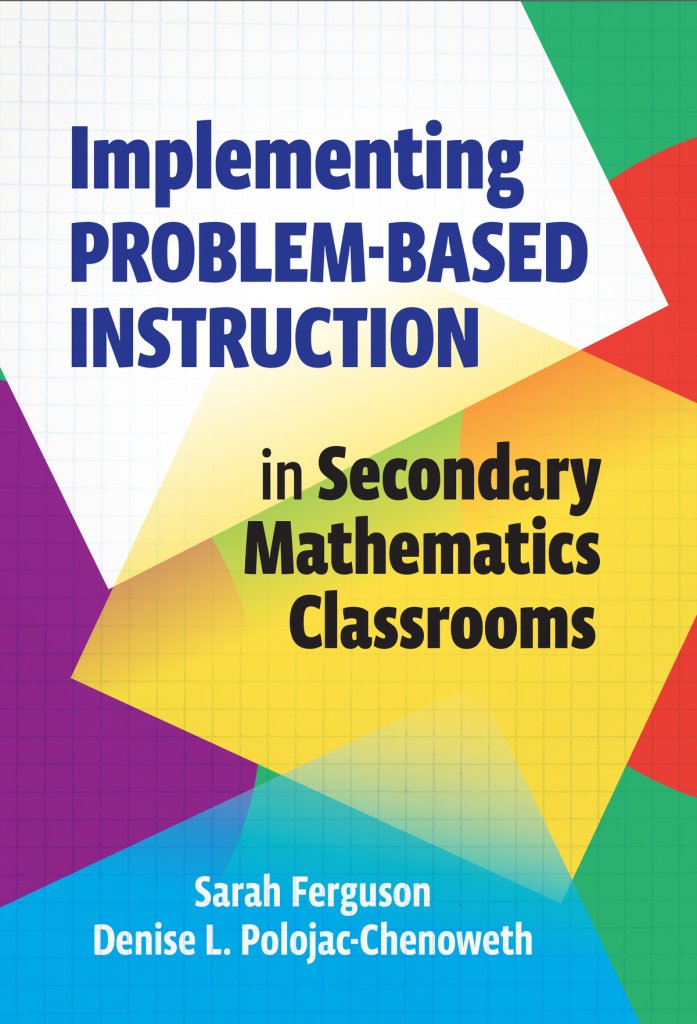Problem-Based Instruction in Middle and High School Math
PBI allows students to investigate real-world mathematical questions, increasing engagement with and understanding of course material.
Your content has been saved!
Go to My Saved Content.Coach, facilitator, and guide on the side are phrases we have heard being used to describe the teacher’s role in PBI (problem-based instruction). Our idea of PBI is that students are exploring, inquiring, and crafting their own knowledge instead of being spoon-fed information by their teacher. In PBI the teacher moves from being the main disseminator of knowledge to a tool students use to help them guide their own exploration. The teacher must be well prepared and well versed in the content to be able to guide students to appropriate resources, answer questions, and ensure students remain on the correct trajectory with their inquiry. It is the role of the teacher as the content expert to come alongside the students to share resources, encourage, ask probing questions, and ensure students have a supportive environment in which to explore, inquire, and craft their understanding.
The preparations for a teacher in a PBI setting come largely before a PBI lesson is launched in the classroom. Teachers need to prepare resources, craft the driving question or problem scenario, and ensure all project aspects are planned and clear. If connections are being made to community entities or entities outside of the classroom, those arrangements must be secured by the teacher before initiating the PBI so that student experiences are well crafted and flow smoothly. While planning the PBI experience, teachers must also be intimately aware of their students’ learning needs.

Students learn at different rates and will seek different levels of content exploration. Scaffolding a lesson to accommodate student learning needs is a necessity in PBI. Teachers must know how to meet individual learning needs and what accommodations will have to be made, and then seek ways to provide support and structure within this framework. Teachers should also be familiar with the instructional learning goals targeted by the PBI lesson to ensure accuracy and adherence to these learning goals throughout the lesson.
Perhaps the most crucial trait of a teacher in a PBI lesson is flexibility. While teachers can plan, plan, and plan, it is almost guaranteed that something will not go as planned. Sometimes students stretch beyond the planned learning target and go deeper with their inquiry than expected. Other times students will hit a roadblock and will require extra support and encouragement. Sometimes schedules change, unexpected events occur, and the pacing for the lesson becomes offset. Teacher flexibility and fluidity will help encourage students to remain focused on their inquiry while knowing their knowledge journey is supported by their teacher.
PBI FROM THE STUDENT’S PERSPECTIVE
“When am I ever going to use this?” “Can you just tell me the steps needed to do this?” If you are or ever have been a math teacher, these are questions you have probably heard from students repeatedly and probably have become frustrated by. However, instead of getting frustrated, we should ask ourselves why these questions continue to permeate our mathematics classrooms. The answer? Students are not engaged in authentic mathematics while they are learning, but rather they are following prescribed steps in a rote memorized fashion to reach an answer. True learning is not regurgitating steps but rather seeing the connectedness of content and understanding the practical usability of different solution strategies.
In traditional mathematics classrooms, the teacher stands at the front of the room, demonstrates several step-by-step examples (typically devoid of real-world context) of a new skill, and then releases students to try it independently. As soon as students begin to struggle, the teacher walks them through the problem step-by-step. Students are exposed to word problems and applications at the end of the unit and then only minimally. As a result, students have developed a mathematical identity that defines their role in math class not as learners of mathematics and problem solvers but as performers whose only goal is to get questions right (Boaler, 2022). They disconnect from mathematics because they view it as rote procedures with no interesting or practical application.
PBI also allows students to learn and practice critical 21st-century skills needed to be successful no matter where their path in life and career takes them. Because PBI is collaborative in nature, students are learning to work together in team settings. They are learning to discuss their thoughts and share ideas so that others can understand and engage in dialogue around the shared comments and disseminate their findings/comments/ideas through various verbal, written, or multimedia platforms.
No matter how clearly or repeatedly a teacher explains a mathematical concept or skill, understanding can occur only when students connect new information with previously learned skills. Sure, using traditional methods may support students in memorizing enough steps to allow them to pass their unit assessment or even their end-of-course assessment, but is that truly learning? Rote regurgitation of memorized steps rarely results in long-term learning that translates to solving real-life problems or even to subsequent courses taken during their academic careers. To achieve this level of mathematical understanding, students must be able to engage in authentic mathematical tasks that allow them to collaborate, problem-solve, and problematize. In other words, mathematics is not something students learn by watching; it’s something they learn by doing. One of our students described PBI as a puzzle: “You look for pieces you need when you need them, and then all of a sudden, the whole picture comes together.”
In contrast to student experiences in traditional classrooms, students in a PBI environment feel immersed in their learning. They begin to believe that their voice matters and immediately see the applicability and practicality of what they are learning. Instead of “When am I ever going to use this?” and “Just tell me what the steps are,” students ask questions that prompt exploration, resulting in learning in context. Yes, students are working with manipulatives; yes, sometimes they complete practice worksheets; yes, students are working with their teacher(s) and peer(s), but each activity is carefully crafted toward its purpose relative to the problem/task to be solved/completed. In PBI lessons, there is no longer a feeling that students are learning content because it is in chapter 2 and they just finished chapter 1, so chapter 2 is what comes next . . . instead, the content is explored in context to give meaning and applicability.
Transitioning from a traditional classroom environment to one grounded in PBI can be challenging for students. PBI pushes students to think. PBI pushes students to go beyond what they think they know and to use what they know to “figure out” new concepts. PBI is different from how most students have been learning mathematics for years—it pushes them outside their comfort zone. As a result, students will push back. They will complain.
However, we can tell you from firsthand experience that if teachers remain consistent and support students through this struggle without compromising the foundations that PBI is built upon, students will not only accept this new way of learning mathematics but will thrive because of it. One of our students explained it this way: “This class is different. We don’t just cover content through lectures and you [the teacher] telling us what to do. We explore and discuss ideas, and suddenly I feel like I just know it. I feel like I have learned more in this math class than all of my other math classes combined.”
Reprinted by permission of the Publisher. From Sarah Ferguson and Denise L. Polojac-Chenoweth, Implementing Problem-Based Instruction in Secondary Mathematics Classrooms, New York: Teachers College Press. Copyright © 2024 by Teachers College, Columbia University. All rights reserved.
